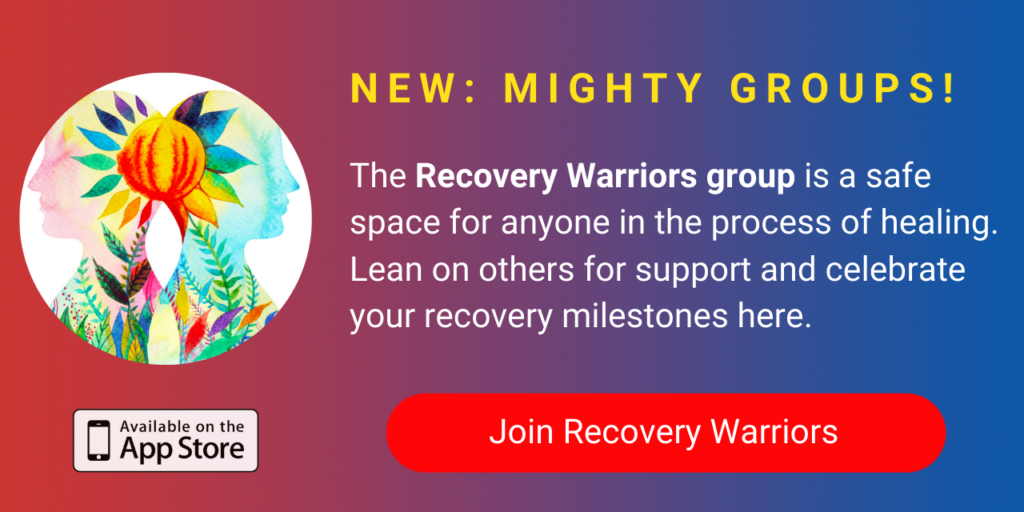What It’s Like to Experience an ‘Unconventional’ Eating Disorder and Specific Phobia
Editor's Note
If you live with an eating disorder, the following post could be potentially triggering. You can contact the Crisis Text Line by texting “NEDA” to 741741.
The media has historically put out very stereotypical depictions of eating disorders, from Netflix’s “To the Bone” to ABC Family’s “Make it or Break It.” When people hear the words “eating disorder” it often evokes images of an emaciated white female who severely restricts her intake or purges after every meal. Not only is this not representative of a large number of eating disorders, it is also damaging and invalidating to people who do not fit that stereotype. There are many different types of eating disorders, but film and television typically depict only anorexia nervosa and bulimia nervosa. There are a handful of other types of eating disorders including binge eating disorder (BED), other specified feeding and eating disorders (OSFED), and a much newer diagnosis: ARFID.
Avoidant/restrictive food intake disorder, or ARFID, has only been around clinically since 2013, but from personal experience, it has existed long before the DSM-5. This eating disorder is characterized by specific aversion to food due to sensory factors such as texture and color, or due to fear of adverse reactions to food such as choking or vomiting. These symptoms are under the presumption that the individual’s food aversions are not due to negative or distorted body image. Over the past few years, I have had clinicians diagnose me with ARFID and others that say I have anorexia nervosa, and while I do not like being defined by a diagnosis, I have also really struggled not fitting into a clear-cut category.
I can definitively tell you the day my eating changed. I began to feel scared that I would get a stomachache or worse, and now, 12 years later, I have a name for that fear and anxiety: emetophobia, a specific phobia of vomiting. This changed my eating patterns for the rest of my life. My brain classified foods and situations into safe and unsafe. My anxiety was on high alert, always trying to position myself close to an exit and making sure there was nothing blocking me. I developed rules to keep me safe, only eating if I did not have anything I deemed important after the meal. For the majority of the time when I experienced the worst of my symptoms, though, there was not a diagnosis of ARFID. I was dismissed as “just” having anxiety, but no one ever tried to investigate further.
To add to the complicated mix of eating disorders, I was not immune to negative body image. I grew up in a pre-professional ballet studio, constantly looking in a mirror and comparing myself to others. While my eating began to change in middle school because of my phobia, body image did not start impacting my food intake until college. When I began to pursue treatment for my eating disorder after my first psychiatric hospitalization, I started in a day treatment program and I was so anxious about all the nuances of the program and eating in a place that was not my home. I was also just officially told that I have an eating disorder during the hospitalization, so I was still processing the fact that I now had a diagnosis even if it was generic. It was at the beginning of treatment that I began to realize that my ARFID symptoms and anorexia symptoms had become so intertwined at some points, but also were very distinctly separate at other points. Sometimes I could go for months where I did not care about how food and exercise impacted my body because I was so petrified by my emetophobia. There were other times when I was so focused on my need to control in my life that I fell deep into my anorexic behaviors and tendencies.
As I progressed in higher levels of care, I would often get frustrated because all these different scenarios made treating my eating disorder very difficult. First, it had only been four years since ARFID became a diagnosis so there was little to no research around the disorder, which means there were no specific evidence-based treatments. Second, the goal of higher levels of care is often to stabilize behaviors to allow for continued work in lower levels of care and an outpatient setting, but when the cause of behaviors varied greatly and the treatment modalities for anorexia did not address the underlying problems stemming from my phobia, I really began to feel stuck between a rock and a hard place. On top of everything, I once had a clinician who said despite all of the symptoms I experience related to ARFID, clinically it is not possible to share that diagnosis with anorexia nervosa because of the diagnostic criteria. I found this to be one of the most invalidating moments of my treatment because I already felt that I was not getting everything I could of out of the higher levels of care, and suddenly I’m being told that two things that I have personally experienced cannot be true according to a book that is only updated every 10 to 15 years.
I have now been out of a higher level of care for the longest time since starting treatment and I still struggle with thoughts and occasionally behaviors related to both eating disorders. Even though treatment often left me frustrated and confused, I can certainly say that I have expanded my palate and have a wider variety of foods that feel moderately safe when my ARFID and phobia are on high alert. I have recently been having difficulty accepting my post-treatment body and other compounding factors, such as the impact of cancer treatments on my body, and I have felt like I do not belong in my ARFID support groups on Facebook. Despite this, I am learning that there is always going to be give and take in life. There are ways to find positives in every situation. While I might be struggling more with body image and the effects it has on my eating in the present moment, that does not invalidate my previous struggles with ARFID. It also means I am a few steps ahead of where I think I am on the path of recovery. Each day presents new challenges for my eating disorder brain and I am learning that I am stronger than those voices. Each meal, whether it is the safest blandest food or a brand-new challenge food, is a step forward on the path of recovery from any eating disorder.
Photo by Marius Muresan on Unsplash


